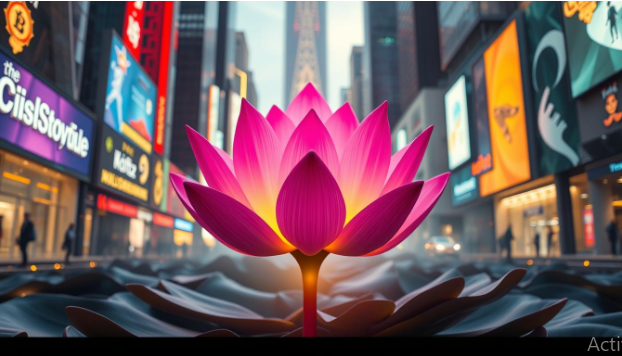
Lotus: A Complete Guide to History, Features, Symbolism, and Modern Influence
The lotus stands as one of the most recognizable symbols in culture, design, wellness, and lifestyle. It represents purity, growth, and renewal, yet it also carries deep scientific, artistic, and spiritual meaning. Because people search for clear explanations, this guide delivers direct answers, structured details, and highly organized insights.
What Is a Lotus? Understanding Its Core Identity
The lotus is a unique aquatic plant known for its floating leaves and elegant flowers. Although it grows in muddy water, it rises clean and bright above the surface. Therefore, it has become a universal sign of hope. Moreover, its natural resilience attracts researchers, designers, and wellness communities.
History of the Lotus and Its Global Importance
Across ancient civilizations, the lotus carried exceptional value. Egyptians associated it with creation and rebirth, while Asian cultures connected it to enlightenment. Consequently, the plant became a powerful icon in art, sculptures, and religious texts. Over time, its symbolism transformed into a global language of purity and personal evolution.
Lotus Symbolism in Culture, Religion, and Philosophy
The lotus symbolizes purity, strength, and spiritual awakening. Since it grows through dark water and rises untouched, it represents positive transformation. Additionally, its unfolding petals often describe stages of growth. Because of these associations, people use lotus imagery in meditation, jewelry, wellness branding, and motivational teachings.
Botanical Characteristics of the Lotus Plant
The lotus features broad floating leaves, long stems, and vibrant blooms. Each part supports strong survival abilities. For instance, its seeds can remain viable for centuries, and its surface naturally repels water. As a result, scientists study the plant to develop materials that mimic its self-cleaning properties.
Lotus in Modern Design, Art, and Architecture
Designers frequently use the lotus as a foundation for visual concepts. Its clean lines influence logos, textiles, structures, and digital graphics. Moreover, architects often take inspiration from its curves and symmetry. Consequently, the lotus shape strengthens emotional connection and adds meaning to high-value design experiences.
Lotus in Health, Wellness, and Mindfulness Practices
The lotus plays an important role in yoga, meditation, and holistic lifestyles. People adopt lotus positions to improve posture and focus. Furthermore, practitioners use lotus imagery to encourage mental clarity. Because the flower represents emotional balance, it supports wellness brands that promote inner healing and positive daily habits.
Technological Innovation Inspired by the Lotus Effect
Researchers developed the “lotus effect,” a scientific principle describing the plant’s ability to resist dirt and water. Thanks to this natural feature, engineers create self-cleaning surfaces used in fabrics, glass, and outdoor materials. Therefore, the lotus continues shaping innovation across technology, sustainability, and industrial design.
Lotus in Automotives: A Legacy of Speed and Precision
The Lotus brand in automotive engineering stands for performance, balance, and lightweight design. Since its early formation, the company focused on agile handling and efficiency. Consequently, many sports cars achieved legendary status. Today, the brand continues expanding into electric innovation, while staying committed to precision engineering.
How the Lotus Influences Lifestyle, Fashion, and Branding
Many fashion labels integrate lotus symbols into accessories, clothing, and beauty products. The shape evokes elegance and calm energy, which strengthens brand presence. Additionally, marketers use lotus elements to attract consumers seeking balance and authenticity. Ultimately, the flower helps brands communicate transformation and emotional well-being.
How to Grow and Care for a Lotus Plant
Growing a lotus requires warm sunlight, nutrient-rich soil, and stable water conditions. Gardeners usually plant tubers inside containers placed underwater. After growth begins, regular feeding supports healthy blooms. Although the plant thrives in still ponds, it also adapts to decorative indoor water gardens.
Common Questions People Ask About the Lotus
People often ask about the meaning of the lotus, its cultural links, and its botanical behavior. Additionally, many want guidance on growing the plant at home. Because these questions appear frequently in search engines, providing clear and direct answers helps readers gain confidence and practical knowledge.
Best Multimedia Enhancements for Lotus Content
Content becomes more helpful when multimedia elements support the topic. Using lotus images with ALT text strengthens accessibility. Likewise, adding short videos or illustrations improves understanding of its symbolism and growth cycle. Therefore, multimedia enhances engagement and makes complex information easier for readers and AI systems to process.
Conclusion
The lotus remains one of the most influential symbols across culture, design, wellness, and technology. Its strength, beauty, and meaning continue inspiring people worldwide. Therefore, exploring its roots helps you appreciate its value even more. If you want more in-depth guides, request your next topic now.
FAQs
1. What does the lotus symbolize?
The lotus symbolizes purity, strength, and personal growth. Because it rises clean from muddy water, it represents transformation and progress.
2. Is the lotus difficult to grow?
Growing a lotus is simple with warm weather, sunlight, and clean water. With proper care, the plant produces bright flowers.
3. Why is the lotus important in spiritual practices?
The lotus represents awakening and clarity, which aligns with meditation and mindfulness traditions.
4. How does the lotus effect work?
The lotus effect describes the plant’s ability to repel water and dirt through microscopic surface structures.
5. Is the lotus used in modern design?
Yes, the lotus appears in logos, architecture, fashion, and digital art because of its elegant shape and symbolic meaning.


